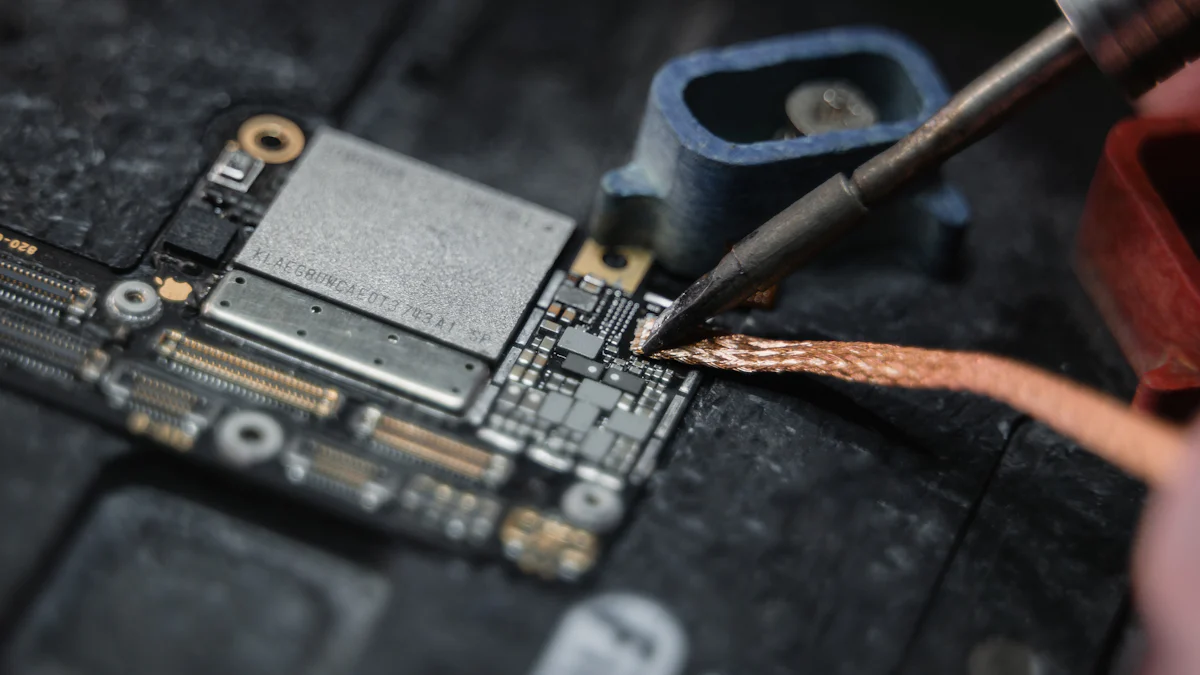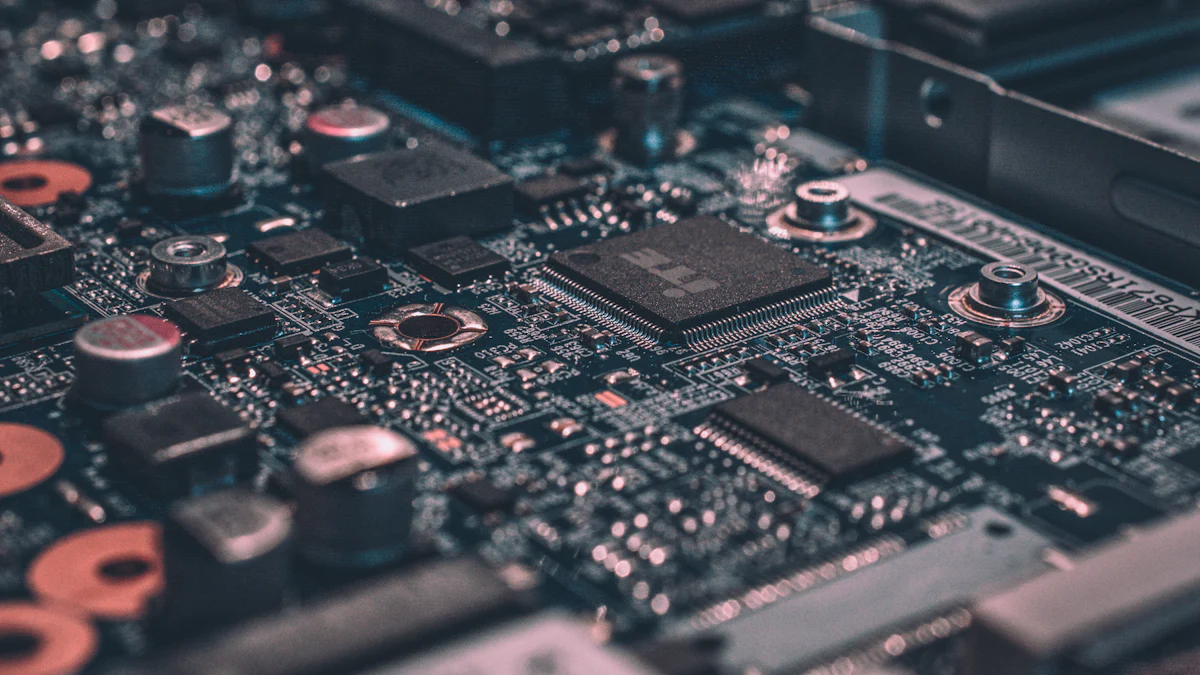A roadmap for the future chip coolant temperature

You must understand the critical role chip coolant temperature plays in advancing technology. As chips generate 50-100 watts of heat per square centimeter, managing this heat becomes essential. High temperatures can drastically reduce chip performance and lifespan, sometimes shortening life to mere hundreds of hours. Modern CPUs adjust their frequency to prevent failure, highlighting the importance of maintaining optimal temperatures. By effectively managing chip coolant temperature, you ensure enhanced performance and longevity, paving the way for a roadmap for the future in technological innovation.
Current Challenges in Chip Cooling

Increasing Heat Generation
Impact of Miniaturization and Increased Processing Power
You face a significant challenge with the increasing heat generation in modern chips. As technology advances, chips become smaller and more powerful. This miniaturization leads to higher heat densities, with current chips generating about 50-100 watts of heat per square centimeter. This intense heat can compromise chip performance and reliability. Engineers strive to find effective ways to dissipate this heat from complex modules, ensuring that chips operate efficiently and safely.
Limitations of Traditional Cooling Methods
Traditional cooling methods, such as air cooling, struggle to keep up with the demands of modern chips. These methods often rely on energy-intensive air conditioning systems, which are not only costly but also inefficient. Direct-to-chip liquid cooling emerges as a promising alternative, reducing reliance on these outdated methods. By adopting innovative cooling solutions, you can better manage the heat generated by today's powerful chips.
Environmental and Energy Concerns
Energy Consumption of Cooling Systems
Cooling systems consume a substantial amount of energy, contributing to higher operational costs and environmental impact. You must consider the energy efficiency of your cooling solutions to minimize these effects. By optimizing cooling systems, you can reduce energy consumption and achieve cost savings, benefiting both your operations and the environment.
Environmental Impact of Current Cooling Technologies
Current cooling technologies often have a negative impact on the environment. The use of refrigerants and other chemicals in traditional cooling systems can lead to harmful emissions. You should explore eco-friendly alternatives that minimize environmental harm. By investing in sustainable cooling technologies, you contribute to a greener future while maintaining optimal chip performance.
Importance of Optimal Coolant Temperature
Performance Enhancement
Relationship between temperature and processing speed
You must understand the direct relationship between temperature and processing speed. As chip temperatures rise, their performance can degrade significantly. High temperatures can cause silicon chips to behave unpredictably, especially when they reach around 185 to 200°C. This unpredictability can lead to reduced processing speeds and potential failures. By maintaining an optimal coolant temperature, you ensure that chips operate at their peak performance, allowing for faster processing speeds and more efficient operations.
Effects on computational accuracy
Temperature also affects computational accuracy. When chips overheat, they may produce errors in calculations, leading to inaccurate results. This is particularly critical in applications requiring high precision, such as scientific computations and financial modeling. By keeping the coolant temperature within an optimal range, you can minimize these errors, ensuring that your computations remain accurate and reliable.
Longevity and Reliability
Impact on chip lifespan
The lifespan of a chip is heavily influenced by its operating temperature. High temperatures can accelerate wear and tear, reducing the chip's lifespan to mere hundreds of hours. By maintaining a lower coolant temperature, you can extend the life of your chips, ensuring they remain functional for longer periods. This not only enhances the reliability of your devices but also reduces the need for frequent replacements, saving you time and resources.
Reduction in failure rates
You can significantly reduce failure rates by managing coolant temperatures effectively. Overheating can lead to increased failure rates, as chips are more likely to malfunction under extreme conditions. By implementing a roadmap for the future that focuses on optimal coolant temperatures, you can enhance the reliability of your systems. This approach ensures that your devices operate smoothly, reducing downtime and improving overall efficiency.
Future Trends in Cooling Technology
Advanced Liquid Cooling Systems
Innovations in liquid coolant materials
You will witness significant advancements in liquid cooling systems. Researchers are developing new liquid coolant materials that offer superior thermal conductivity. These materials efficiently transfer heat away from chips, ensuring optimal performance. By using advanced coolants, you can achieve better cooling efficiency and reduce the risk of overheating. This innovation marks a crucial step in the roadmap for the future of chip cooling technology.
Integration with chip architecture
Integrating liquid cooling systems directly with chip architecture is another emerging trend. Engineers design chips with built-in channels for liquid coolants, allowing for more effective heat dissipation. This integration enhances the cooling process and improves overall chip performance. By adopting this approach, you can ensure that your chips remain cool even under heavy workloads, extending their lifespan and reliability.
Emerging Solid-State Cooling Solutions
Thermoelectric cooling advancements
Thermoelectric cooling solutions are gaining traction as a viable alternative to traditional methods. These systems use thermoelectric modules to create a temperature difference, effectively cooling chips without moving parts. You benefit from the reduced noise and maintenance requirements associated with these systems. As thermoelectric technology advances, you can expect more efficient and compact cooling solutions that align with the roadmap for the future.
Potential for widespread adoption
The potential for widespread adoption of solid-state cooling solutions is promising. As these technologies become more cost-effective and efficient, you will likely see them integrated into various electronic devices. This shift will lead to more reliable and energy-efficient cooling systems, reducing environmental impact. By embracing these emerging solutions, you position yourself at the forefront of technological innovation, ensuring your devices remain competitive in the ever-evolving tech landscape.
Roadmap for Implementation
Research and Development
Investment in new cooling technologies
You must prioritize investment in new cooling technologies to stay ahead in the rapidly evolving tech landscape. Allocating resources to research and development will drive innovation and lead to breakthroughs in chip cooling solutions. By investing in cutting-edge technologies, you can enhance the efficiency and effectiveness of your cooling systems. This proactive approach ensures that you remain competitive and well-prepared for future challenges.
Collaboration between industry and academia
Collaboration between industry and academia plays a crucial role in advancing chip cooling technologies. By partnering with academic institutions, you can leverage their research capabilities and expertise. This collaboration fosters the exchange of ideas and accelerates the development of innovative solutions. Engaging with academia also provides access to a pool of talented researchers and students who can contribute to your projects. By working together, you can create a robust roadmap for the future of chip cooling.
Integration into Existing Systems
Retrofitting current infrastructure
Retrofitting current infrastructure is essential for implementing new cooling technologies. You need to assess your existing systems and identify areas where upgrades are necessary. By integrating advanced cooling solutions into your infrastructure, you can improve performance and efficiency. This process may involve replacing outdated components or modifying existing setups to accommodate new technologies. By taking these steps, you ensure that your systems are equipped to handle the demands of modern chips.
Overcoming technical and financial barriers
Overcoming technical and financial barriers is a critical aspect of implementing new cooling technologies. You may encounter challenges related to compatibility, cost, and scalability. To address these issues, you should conduct thorough evaluations and develop strategic plans. This may involve seeking external funding or forming partnerships to share resources and expertise. By addressing these barriers, you can successfully implement a roadmap for the future that enhances your cooling capabilities and supports technological advancement.
Impact on Performance and Efficiency
Enhanced Processing Capabilities
Increased computational power
You can significantly boost computational power by optimizing chip coolant temperatures. Efficient cooling systems, such as direct liquid cooling, minimize thermal resistance. This leads to more effective heat transfer and lower operating temperatures. As a result, chips can operate at higher frequencies without the risk of overheating. This increase in computational power allows you to handle more demanding tasks and applications, enhancing overall system performance.
Support for more complex applications
With improved cooling technologies, you can support more complex applications. Advanced cooling solutions, like liquid-cooled data centers, efficiently dissipate heat from high-performance CPUs and GPUs. This capability ensures that your systems can manage the increased thermal output of sophisticated applications. By adopting these technologies, you position yourself to tackle complex computational challenges, paving the way for a roadmap for the future in technological advancements.
Energy Efficiency Improvements
Reduction in energy consumption
You can achieve significant energy savings by transitioning from traditional air cooling to liquid-based systems. Liquid cooling technologies, such as direct-to-chip cooling, eliminate intermediary heat exchange mechanisms. This improvement reduces cooling power consumption and enhances energy efficiency. By implementing these systems, you lower energy usage, contributing to a more sustainable and cost-effective operation.
Cost savings and environmental benefits
Optimizing cooling technologies not only reduces energy consumption but also offers substantial cost savings. By upgrading to efficient cooling systems, you decrease operational expenses associated with energy use. Additionally, these improvements have positive environmental impacts. By minimizing energy consumption and reducing reliance on harmful refrigerants, you contribute to a greener future. This approach aligns with the roadmap for the future, ensuring that your operations remain both economically and environmentally sustainable.
Addressing chip coolant temperature challenges is crucial for technological advancement. You can unlock significant performance and efficiency benefits by embracing future cooling technologies. These innovations enhance processing capabilities and reduce energy consumption, leading to cost savings and environmental benefits. Proactively adopting innovative cooling solutions ensures you stay ahead in the competitive tech landscape. By investing in research and development, you contribute to a sustainable and efficient future. This approach not only supports current needs but also prepares you for the evolving demands of tomorrow's technology.